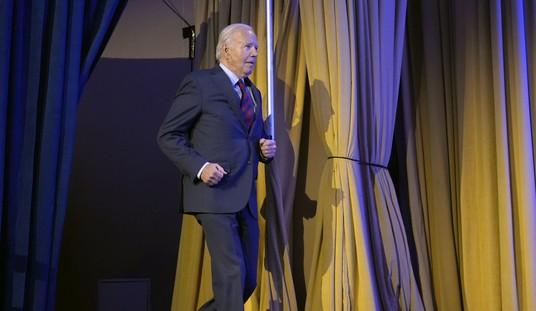An Aug. 31, 2011, story by Al Baker covers a federal judge's ruling that a case challenging the New York Police Department's, NYPD, "stop and frisk" policy can go forward. But the story is so one-sided that it practically topples over as you're reading it.
The suit was brought by the Center for Constitutional Rights, CCR, a leftist outfit that sued Reagan over Grenada and El Salvador, represented performance artist Karen Finley in a suit against the National Endowment for the Arts, represented a Palestinian "immigrant activist," and so forth. The New York Times naturally omits this history. The suit alleges that the NYPD's policy is based "not on reasonable suspicion of individuals but on racial profiling."
The judge (who sounds like she might have done a stint at the CCR during some time in her career), declined to dismiss the case, saying, "This case presents an issue of great public concern. Writ large, that issue is the disproportionate number of African-Americans and Latinos who become entangled in our criminal justice system, as compared to Caucasians." Note the passive voice. Like flies in a spider's web, they become "entangled" in the criminal justice system.
The New York Times' story then duly repeats statistics offered by the CCR's Assistant Legal Director, Christopher Dunn. "In 2010, city officers made more street stops -- 601,055 -- than in any previous 12-month period." Proving what exactly? The story editorializes: "As a practical matter, the stops display a measurable racial disparity: black and Hispanic people generally represent more than 85 percent of those stopped by the police, though their combined populations make up a small share of the city's racial composition."
Recommended
OK. Are there any other relevant statistics here? The story does cite Police Commissioner Raymond W. Kelly's position that "The racial breakdown of the stops correlates to the racial breakdown of crime suspects." But no sooner does the story allude to the elephant in the room than it takes issue with the NYPD, warning that the rising number of stops is "bringing the practice under increasing scrutiny from lawmakers (no one is quoted), academics (ditto), the Center for Constitutional Rights and the New York Civil Liberties Union."
With the exception of the glancing reference to Kelly's explanation, The New York Times never provides the most relevant statistics regarding minorities and violent crime, which concern not the percentage of blacks or Hispanics in the population, but the percentage of those who commit violent crimes. City Journal's Heather MacDonald supplied them:
"Blacks committed 66 percent of all violent crimes in the first half of 2009 (though they were only 55 percent of all stops and only 23 percent of the city's population). Blacks committed 80 percent of all shootings in the first half of 2009. Together, blacks and Hispanics committed 98 percent of all shootings. Blacks committed nearly 70 percent of all robberies. Whites, by contrast, committed 5 percent of all violent crimes in the first half of 2009, though they are 35 percent of the city's population (and were 10 percent of all stops). They committed 1.8 percent of all shootings and less than 5 percent of all robberies."
According to The New York Times and the CCR, police should respond to crimes only in proportion to population statistics. They should deploy as many officers to Central Park South as to Bedford/Stuyvesant. And they should stop and frisk only a percentage of minority suspects.
Since 1994, the NYPD has aggressively deployed officers to high crime districts and kept careful tabs on patterns of criminal activity. Crime has dropped 77 percent, to levels not seen since the early 1960s. In its reply brief, the NYPD pointed out that it deploys resources based upon crime statistics, witnesses and citizen complaints -- the successful CompStat program. What it could have added is that most of those complaints come from law-abiding blacks and Hispanics.
People who live in high crime areas (not federal judges, lawyers for the CCR, or The New York Times' reporters) are very happy to have increased police attention in their neighborhoods. The overwhelming majority of crime victims are also members of minority groups, and since the mid-1990s -- thanks to the kind of policing initiated by the Giuliani administration and under fire now, they have seen crime rates in their communities plummet.
The New York Times is fixated on the idea of racial profiling. No doubt they missed the news that about half of the members of the NYPD are members of minority groups themselves. But if the kind of harassment represented by this suit and the tendentious reporting of The New York Times succeeds in intimidating the police, the most successful reform of city life in 100 years could be undone.

























Join the conversation as a VIP Member